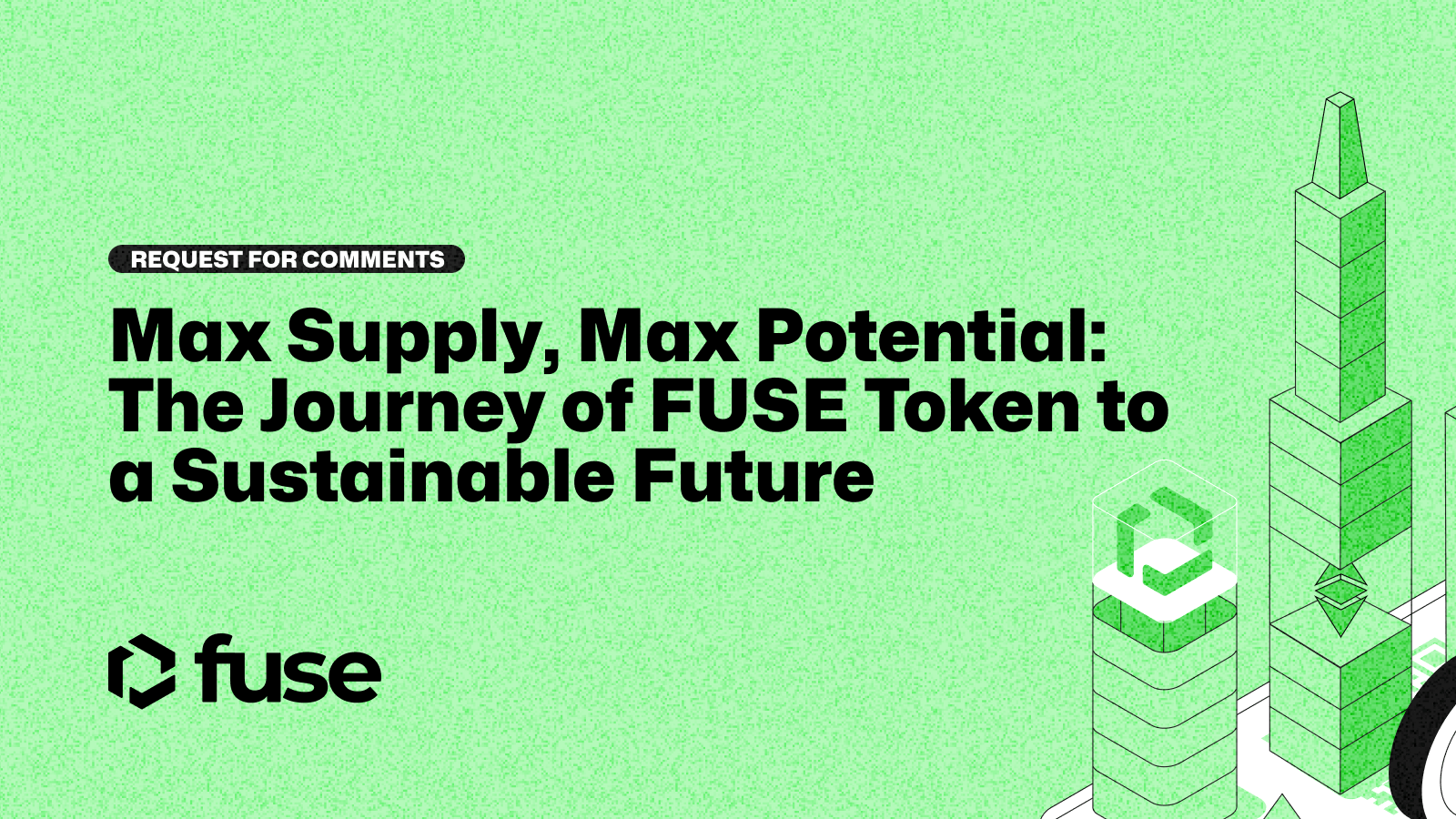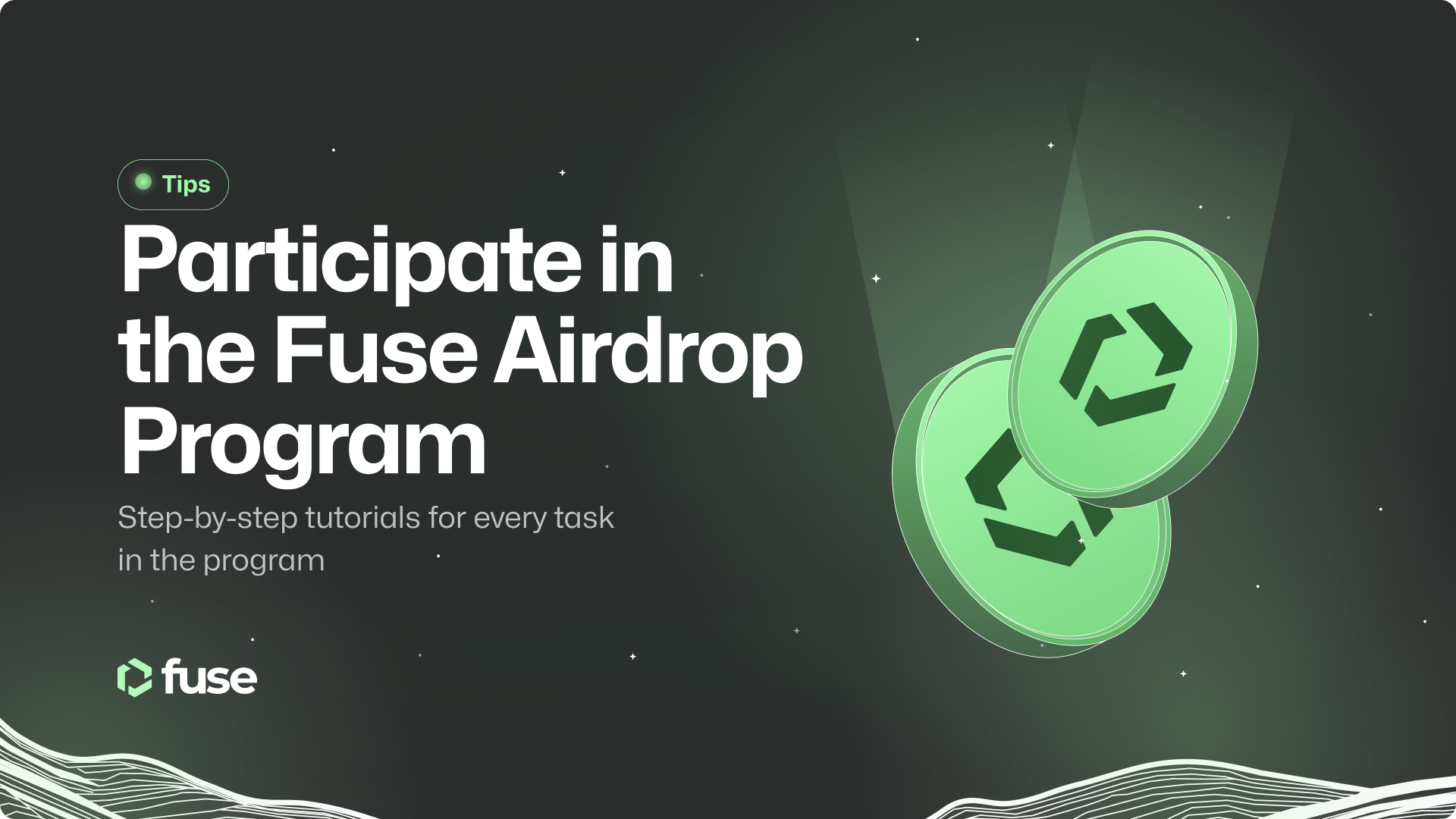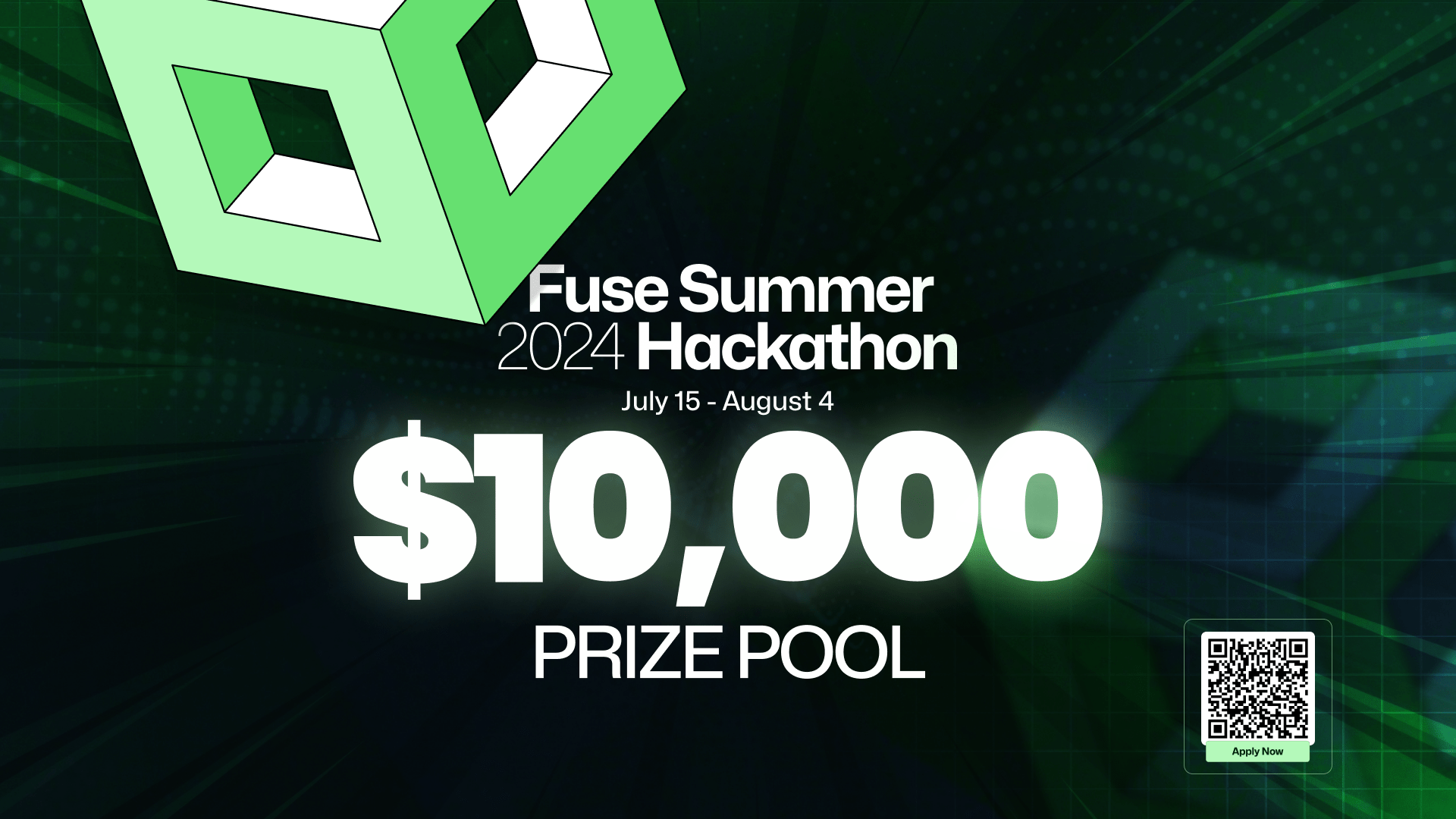The Fuse Network has gained significant traction and use cases as a global decentralized payment solution for small and medium businesses. To further enhance the network’s functionality and sustainability, the Fuse team is proposing changes to the tokenomics of the Fuse Network.
This article will explore the ideas, concepts, and benefits behind transitioning Fuse to a deflationary model, fee burning, and setting a maximum supply for the FUSE tokens. To have your say on proposed changes, please visit the Fuse Forum, where you will find a more detailed description of the proposals and have your say.
- The Need for Change
- Introducing Gradual Inflation Reduction and Max Supply
- Fee Burning with FIP-1559
- Benefits of the Proposed Changes
- FRC002 In Summary
- FAQs
The Need for Change
Fuse initially adopted an inflationary model to ensure the predictability of revenue flow for network validators and delegators. However, as the network has grown and matured, the inflationary model may become negative pressure on the token’s value.
To address this, Fuse aims to transition to a deflationary model that creates value through scarcity, reduces the money supply, and provides a more stable and sustainable network.
Introducing Gradual Inflation Reduction and Max Supply
To achieve the goal of deflationary tokenomics, Fuse proposes a governance vote to reduce inflation gradually and set the maximum supply of FUSE tokens at 400,000,000 FUSE.
By gradually decreasing the inflation rate, the proposed changes aim to increase predictability in staking and rewards and take a step towards a more sustainable model.
To support stakers through the bear market, it is proposed to gradually reduce the inflation rate in August 2024 instead of August 2023.
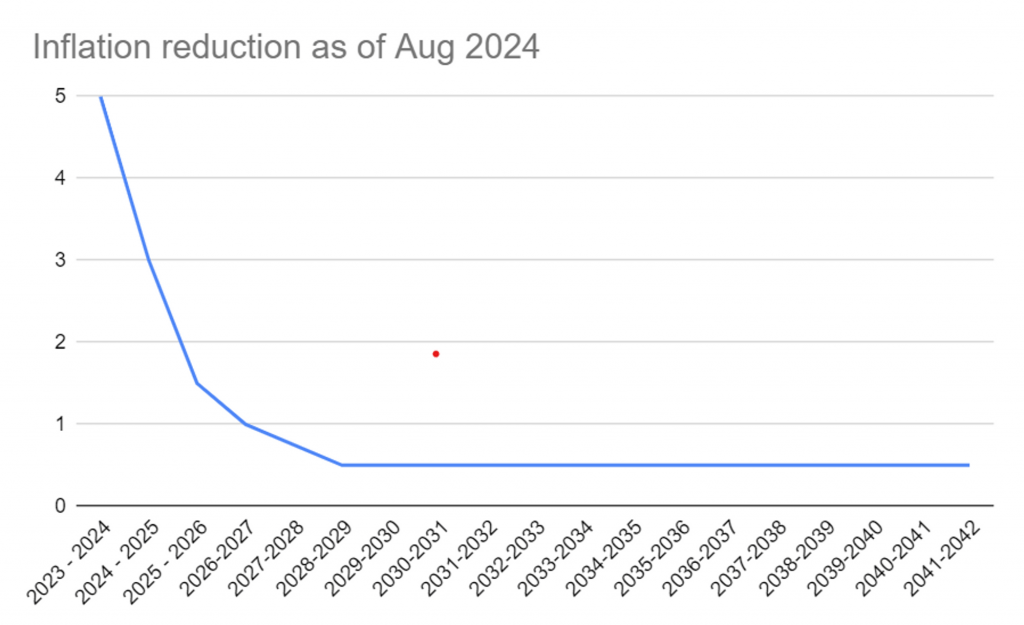
- The inflation rate would decrease in a controlled, fixed manner as of August 2024 to support stakers through the current bear market while pushing for a gradual reduction of Max Supply within 7 years (~2030). This will help push through FIP 1559 and other governance proposals.
- Under the proposal, subject to other impacting factors (such as FIP 1559, see below), the network would approach a deflationary model circa 2027 (i.e., an inflation rate lower than 1% and higher than 0%).
- If the FUSE token price allows, a vote for an additional proactive reduction of inflation rates may be suitable.
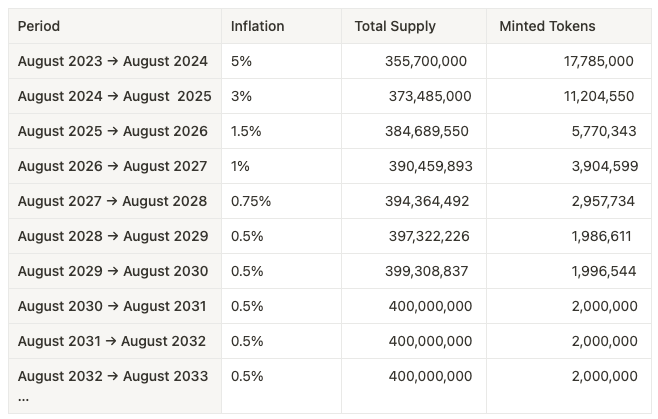
Fee Burning with FIP-1559
Another proposed change is the implementation of FIP-1559, which introduces fee burning based on EIP-1559 from the Ethereum network.
Under this proposal, a base fee of 10 gwei will be burned for each transaction, contributing to the gradual deflation of the Fuse Network and increasing the scarcity of FUSE tokens. Consequently:
- a user pays the same 10 gwei gasPrice – the tx does not become more expensive;
- the Network does not become more susceptible to spam chain attacks;
- Validators do not earn tx fees. They still earn block rewards;
- the burned gas price contributes to the increased scarcity of the token;
- over time, the network becomes more deflationary.
Benefits of the Proposed Changes
The proposed changes to Fuse’s tokenomics offer several benefits for the network and its participants. Here are some key advantages:
1. Increased Token Value
Transitioning to a deflationary model and reducing the maximum supply of FUSE tokens can increase token value. Scarcity and reduced money supply tend to drive up prices, attracting more market visibility, investor interest, and development opportunities.
2. Stability and Predictability
The proposed changes provide a more stable and predictable environment for validators and stakers by gradually reducing inflation and setting a maximum supply. This allows them to better plan for their future returns and make informed decisions regarding their participation in the network.
3. Sustainable Network Growth
A deflationary model and controlled inflation reduction contribute to a more sustainable network. With a higher token value and a stable ecosystem, Fuse becomes an attractive option for projects and businesses, promoting further growth and adoption.
4. Alignment with Market Conditions
The proposed changes consider the current market conditions. In a bear market, more incentives and lower fees are needed to support network participants, while a bull market requires fewer incentives and higher fees. By adjusting the tokenomics accordingly, Fuse aims to create an equitable environment that aligns with market dynamics.
In summary
The proposed transition of Fuse to a deflationary model and setting a maximum supply of FUSE tokens brings several advantages to the network and its participants. By gradually reducing inflation and implementing fee burning, Fuse aims to increase token value, stability, and sustainability.
These changes will be introduced through community voting and subsequent updates. With these adjustments, Fuse moves closer to becoming a valid alternative to legacy payment infrastructure, leveraging the benefits of decentralization for small and medium businesses globally.
FAQs
What is tokenomics?
Tokenomics is a term derived from the combination of “token” and “economics,” which refers to the economic system and monetary policy of a specific cryptocurrency, token, or NFT. A tokenomics design involves creating rules and incentives that explain the issuance, distribution, and circulation of the tokens within the ecosystem.
Tokenomics includes various aspects, such as token supply, utility, and underlying technology. The token supply refers to the total number of tokens that will be created and how they will be distributed among different stakeholders.
Why is tokenomics important in cryptocurrency?
A project’s token economics play a critical role in defining its success in the long run. The main objective of a tokenomics design is to create a sustainable economic model for the tokens, ensure long-term supply, and inform potential investors about how the tokens will be distributed in the market.
What is EIP 1559?
EIP 1559 is a proposed improvement to the Ethereum blockchain that aims to simplify the process of setting transaction fees and make the network more efficient. The current system for setting transaction fees on the Ethereum network is complex and can lead to high fees during high network demand.
Under EIP 1559, the network would introduce a new type of transaction fee called a “base fee.” The network automatically sets the base fee based on the current demand for block space. It would be burned (destroyed) when the transaction is processed, effectively reducing the overall supply of Ethereum tokens.
In addition to the base fee, users could also choose to include a “tip” for the miner who processes their transaction. The tip would be paid directly to the miner as an incentive for including the transaction in the next block.
One of the benefits of this system is that it helps reduce transaction fees during times of high network demand, as the base fee would be adjusted automatically based on network congestion. This should make the network more efficient and reduce the need for users to pay high fees to have their transactions processed quickly.
What was the goal of EIP 1559?
EIP 1559 was implemented as part of the London hard fork on the Ethereum network, which occurred on August 5, 2021. The London hard fork was a significant update to the Ethereum network that introduced several new features and improvements, including EIP 1559.
Overall, the implementation of EIP 1559 has been widely regarded as a success, with the new fee structure and increased burning of ETH being seen as positive developments for the Ethereum network. However, there are still some concerns and criticisms around the fee-slashing mechanism, and it remains to be seen how effective it will be at preventing miner manipulation of the base fee.
What does it mean to burn tokens?
This means that the tokens are destroyed by protocol and removed from circulation, usually by sending the token to a particular type of address.
Are other networks implementing EIP 1559?
Yes. One example is Polygon which tested and deployed EIP 1559 as early as December 2021.
What is an inflationary network, and what is a deflationary network?
An inflationary blockchain network continuously grows in the number of tokens in supply, either because there is no fixed limit or because the limit is very high. An example of an inflationary blockchain network is Dogecoin, which has no supply cap and increases its circulation by millions of DOGE daily through its mining process.
A deflationary blockchain network has a decreasing number of tokens in supply, either because there is a low fixed limit or because some tokens are periodically burned or removed from circulation. An example of a deflationary blockchain network is BNB, which has a supply cap of 200 million BNB and burns some BNB every quarter based on its trading volume.
What are the pros and cons of inflation?
The pros and cons of having an inflationary or deflationary blockchain network depend on many factors that can affect the performance and adoption of crypto, such as its use case, technology, community, regulation, etc.
Very roughly speaking, outside the context of Fuse, some of the pros and cons of having an inflationary blockchain network are:
Pros:
- Inflationary networks can incentivize miners to secure the network and validate transactions by offering them rewards in new tokens.
- Inflationary networks can also encourage spending and circulation of the tokens rather than hoarding them for speculation.
- Inflationary networks can adjust their supply to meet the demand and avoid price volatility.
Cons:
- Inflationary networks can lose their value over time due to the dilution of the token supply and decreased purchasing power.
- Inflationary networks can also face competition from other cryptos that offer better returns or features.
- Inflationary networks can be vulnerable to manipulation or corruption by central authorities that control the token creation factor.
Some of the pros and cons of having a deflationary blockchain network are:
Pros:
- Deflationary networks can increase their value over time due to the scarcity of the token supply and the increase in purchasing power.
- Deflationary networks can also attract investors and savers who want to preserve or grow their wealth.
- Deflationary networks can create a sense of urgency and exclusivity among users who want to acquire the tokens before they run out.
Cons:
- Deflationary networks can discourage miners from securing the network and validating transactions by offering them lower rewards or fees in new tokens.
- Deflationary networks can also discourage spending and circulation of the tokens, leading to hoarding and speculation.
- Deflationary networks can face technical challenges or security risks due to the limited supply or the burning mechanism.
Are there other networks using max supply cap?
Some examples of blockchain networks with max supply limitations are:
Bitcoin: The most popular and widely used cryptocurrency network, it has a max supply of 21 million bitcoins. The last bitcoin is expected to be mined around the year 2140.
Ethereum: The second-largest cryptocurrency network by market capitalization, Ethereum has a max supply of no more than 120 million ether. However, this is not a hard cap but a social contract that can be changed by community consensus.
Litecoin: A fork of Bitcoin that aims to offer faster and cheaper transactions, Litecoin has a max supply of 84 million litecoins. The last litecoin is expected to be mined around the year 2142.
Monero: A privacy-focused cryptocurrency network that uses ring signatures and stealth addresses to obfuscate transactions, Monero has a max supply of 18.4 million monero. However, after reaching this limit, there will be a tail emission of 0.6 monero per block every two minutes to incentivize miners.
Cardano: A smart contract platform that aims to offer scalability, interoperability, and sustainability, Cardano has a max supply of 45 billion ADA. The network uses a proof-of-stake consensus mechanism called Ouroboros to secure and reward participants.
